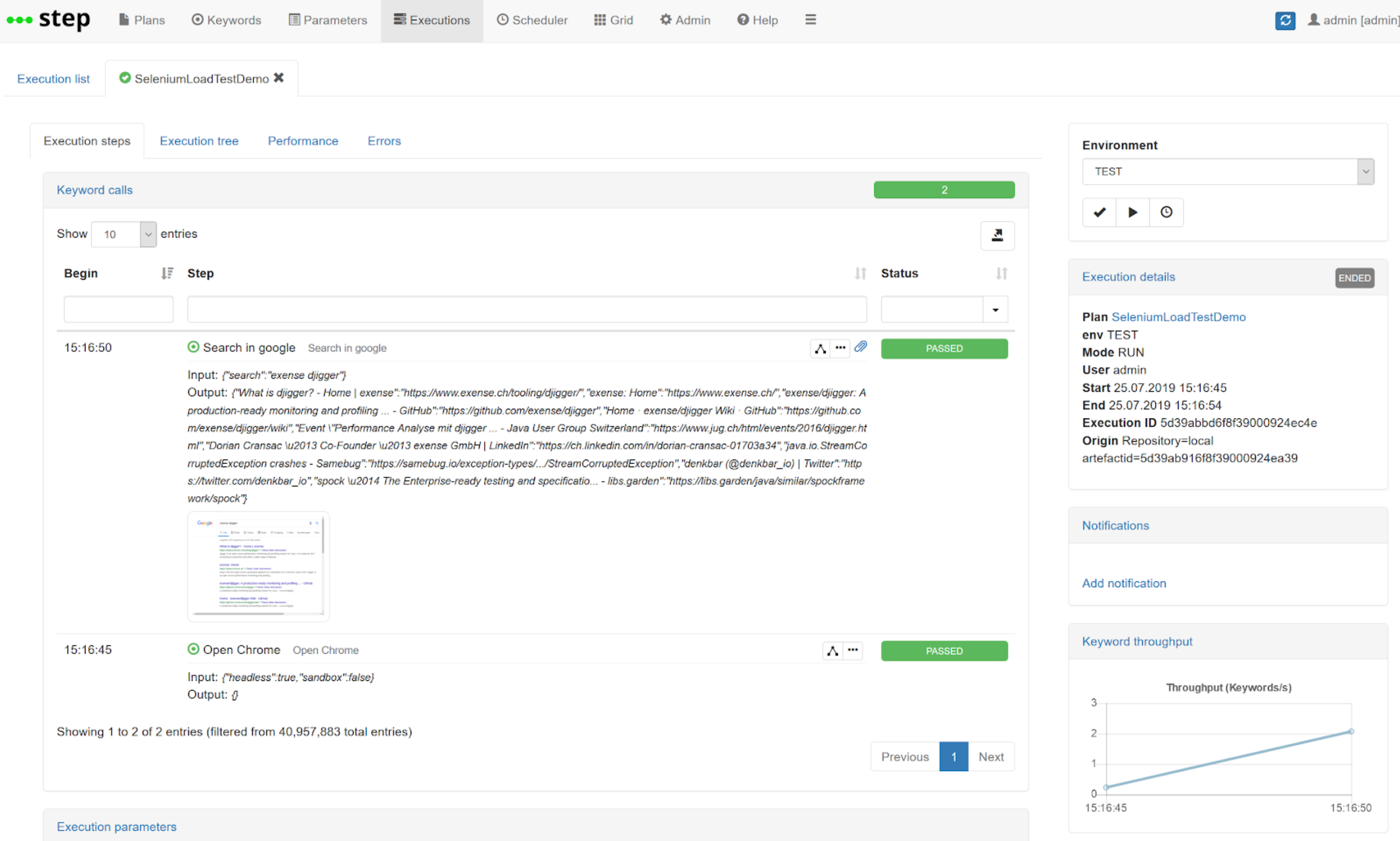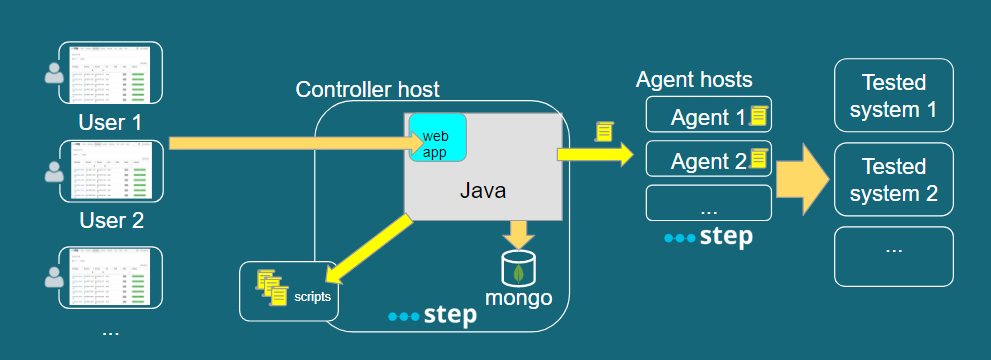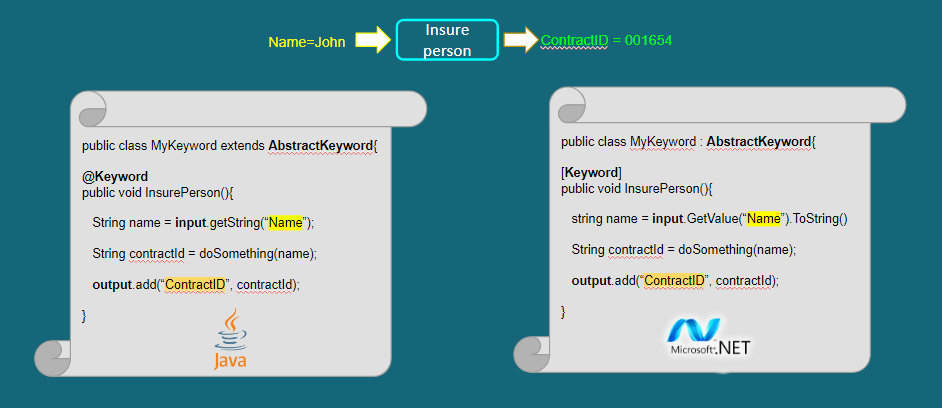Overview
What is step?
step is a unified platform for software automation that allows you to make the most out of automation artifacts while getting rid of specific tools.
How to start with step?
step is powerful and versatile. The easiest way to start is to get a SaaS instance and start with a specific use-case. We’ve selected a few tutorials well suited to start. Simply select the one that best fits your needs. If you prefer installing your own cluster, follow the Quick setup guide
Load-testing
step will handle your load-testing needs, find out how:
> Cypress load testing
> From Selenium automation to load tests
Synthetic Monitoring
step can be used to monitor all your services availability and metrics:
> How to monitor services availability and performance
RPA
RPA testing with step is already available, and we are working hard on creating helpful tutorials soon!
Acceptance Tests
Learn how step can be employed to implement complex E2E acceptance tests where all automation specialists (testers, developers, business analysts, etc) work together efficiently while focusing on what they’re best at:
> Designing functional tests with step
How to get it?
| step SaaS | step OnPrem |
|---|---|
| recommended | |
| In our new step SaaS solution, you can set up a step cluster in just a few easy steps and immediately access it. Best of all, you are only billed for your actual usage, so you can test it risk-free or scale it to enterprise-level demands. | With our established step OnPrem you can have complete control over your own step clusters with your own CPU, storage solution and network management. Download and install it on your own hardware to get started. |
| Start directly in the step Portal | How to setup step OnPrem |
Architecture of step
The content of step, regardless if it is used as SaaS or on-premise is two-fold:
-
a platform comprising multiple software components:
- a central controller which orchestrates the execution of automation scenarios and serves as a web application used for scenario design and results analysis
- a scalable agent grid to run automation code in parallel and in a distributed way
- a database instance used to persist automation artefacts (plans, executions, etc) and reports
-
a framework that provides developers and testers with various APIs and libraries:
- the Keyword API, which aims at decoupling test case implementation from its specification and data (inputs, outputs, expected results)
- a set of other APIs allowing developers to extend other areas of the product (such as interoperability APIs, customized reporting, etc)
- standard packages and plugins offering a wide range of services frequently used in automation contexts. These can be related to automation libs and approaches (such as Selenium or JMeter integration) or have more of a practical use (i.e reading and writing data from/to data sources like Excel or a SQL database)
The platform
The following screenshot will give you an idea of what the execution of an automation scenario looks like in step. It provides all means necessary for technical as well as non-technical users to design and execute automation scenarios.

Here’s a quick glance at what step’s architecture looks likes:

The framework
Here’s the main idea behind the Keyword API and what it looks like when working in Java or .NET (our two most dominant platforms):

Other APIs allow integration with different libraries, testing tools, data repositories, etc:
